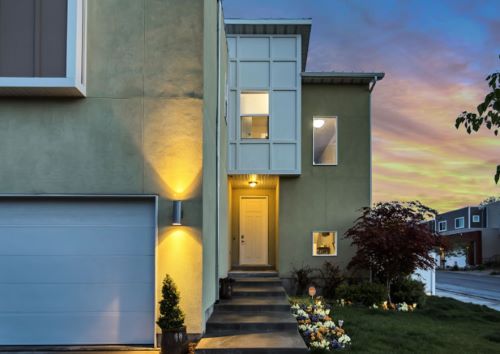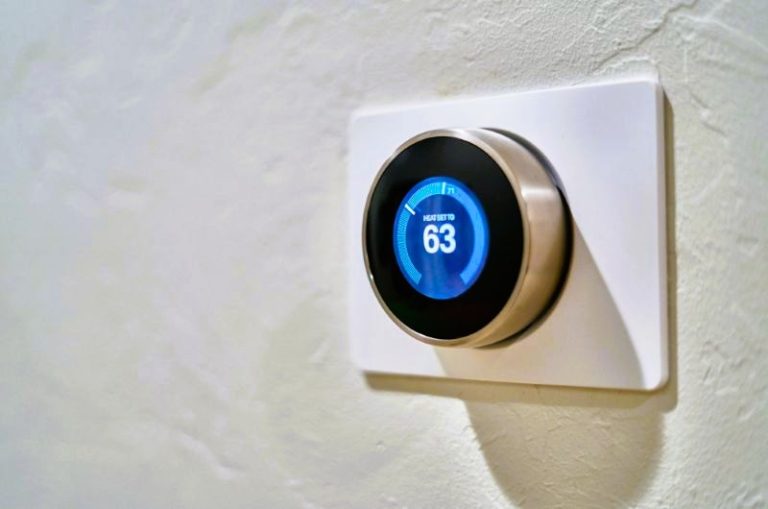

Did you know that residential homes contribute significantly to greenhouse gas emissions? In fact, the U.S. Department of Energy reports that nearly 20% of global energy-related emissions come from households. With climate change becoming a pressing concern, the way we live and maintain our homes plays a critical role in shaping the planet’s future. Many homeowners are now exploring eco-friendly home upgrades that not only reduce environmental impact but also cut energy bills and enhance property value.
This article dives into practical, impactful home upgrades that help you create a more sustainable and environmentally conscious living space.
Switching to Energy-Efficient Lighting for a Brighter Future
Lighting is one of the simplest yet most effective areas to start when making your home eco-friendly. Traditional incandescent bulbs consume large amounts of energy and generate heat, making them inefficient compared to modern alternatives. LED lights, on the other hand, use up to 75% less energy and last 25 times longer. This means lower electricity bills and fewer replacements over time.
Beyond efficiency, LED bulbs come in a variety of styles and colors, offering versatility for every corner of your home. From soft, warm lights for cozy living rooms to bright, cool-toned bulbs for workspaces, there’s an option for every need. By making this switch, you’re not only reducing energy waste but also taking a small yet meaningful step toward reducing your carbon footprint.
Installing a New Roof to Improve Energy Efficiency
Your roof does more than just shelter you from the elements—it plays a key role in regulating your home’s temperature and energy use. Taking on a roof installation project can help you significantly reduce heating and cooling costs. Materials like cool roofs reflect sunlight rather than absorbing it, keeping your home cooler during hot summer months. Metal roofs are another excellent choice, as they are durable, recyclable, and reflect solar heat effectively.
Additionally, the installation of proper insulation beneath your roof ensures that your home retains heat during winter and remains cool in the summer, reducing the workload on your HVAC system. Pairing energy-efficient roofing materials with good ventilation can further enhance performance. Not only will you save money on energy bills, but you’ll also extend the lifespan of your roof by minimizing weather-related wear and tear.
Harnessing Solar Power for Sustainable Living
Switching to solar energy is one of the most impactful upgrades you can make for the planet. Solar panels capture the sun’s energy and convert it into electricity, reducing reliance on non-renewable resources like coal and natural gas. While the upfront cost of solar panels may seem daunting, many governments offer tax credits, rebates, and incentives to make the transition more affordable.
The benefits go beyond environmental impact. Homes with solar installations often have higher resale values, and the long-term savings on electricity bills make them a worthwhile investment. Whether you live in a sunny area or somewhere with moderate sunlight, solar technology has advanced enough to be efficient in most climates.
Replacing Windows and Doors for Better Insulation
Old, drafty windows and doors can be significant sources of energy loss, forcing your heating and cooling systems to work harder to maintain a comfortable temperature. Upgrading to double-glazed or triple-glazed windows creates an effective barrier against heat transfer, keeping your home warm in the winter and cool in the summer.
In addition to replacing windows, adding weather stripping around doors can seal gaps and prevent air leaks. For homeowners seeking a more comprehensive solution, energy-efficient door replacements offer both style and functionality. These small changes can dramatically improve your home’s insulation and lower energy costs, all while making your space more comfortable year-round.
Optimizing Indoor Temperatures with Smart Thermostats
A smart thermostat is a game-changer for managing your home’s energy consumption. Unlike traditional thermostats, these devices allow you to program and automate temperature settings based on your daily routine. For example, you can set your thermostat to lower the heating or cooling when you’re away and adjust it just before you return home.
Many smart thermostats also come with mobile apps, so you can control your home’s temperature remotely. By optimizing when and how much energy your HVAC system uses, smart thermostats reduce waste and ensure your home remains comfortable. Over time, the savings on utility bills make this upgrade a practical and environmentally conscious choice.
Reducing Water Waste with Low-Flow Fixtures
Water conservation is a cornerstone of sustainable living, and upgrading to low-flow fixtures is a practical way to achieve it. Traditional faucets, showerheads, and toilets often use more water than necessary, contributing to both wastage and higher water bills. Low-flow fixtures, on the other hand, are designed to maintain strong water pressure while significantly reducing water usage.
For instance, a low-flow showerhead can cut water consumption by up to 50% without compromising your showering experience. Similarly, low-flow toilets use advanced flushing mechanisms to achieve the same results as standard models while consuming less water. Look for fixtures with the WaterSense label, which guarantees efficiency and performance. These upgrades not only help the environment but also save you money in the long run, making them a win-win solution for your home.
Incorporating Sustainable Materials into Home Design
Sustainability doesn’t have to come at the cost of style. Incorporating eco-friendly materials into your home design is a great way to reduce environmental impact while creating a beautiful, modern aesthetic. For flooring, bamboo and cork are excellent choices, as they are renewable, durable, and visually appealing. Similarly, reclaimed wood adds character to your space while reducing the demand for new timber.
In addition to flooring, recycled materials like steel, glass, and even plastic can be used for countertops, cabinetry, and decorative elements. Choosing local materials whenever possible also minimizes the carbon footprint associated with transportation. Sustainable materials not only help the planet but often require less maintenance, ensuring your home remains functional and stylish for years to come.
Making your home kinder to the planet doesn’t have to involve drastic changes or expensive renovations. By adopting eco-friendly upgrades like energy-efficient appliances, smart technology, and sustainable materials, you can significantly reduce your environmental footprint while enjoying long-term savings. Each upgrade, no matter how small, contributes to a healthier planet and a more efficient home.
Whether it’s installing a cool roof, switching to LED lights, or setting up a composting system, these steps are not only practical but also necessary in today’s world. As a homeowner, you have the power to create a living space that aligns with the principles of sustainability. Start with one upgrade at a time, and over the years, you’ll see the positive impact on both your home and the environment.


